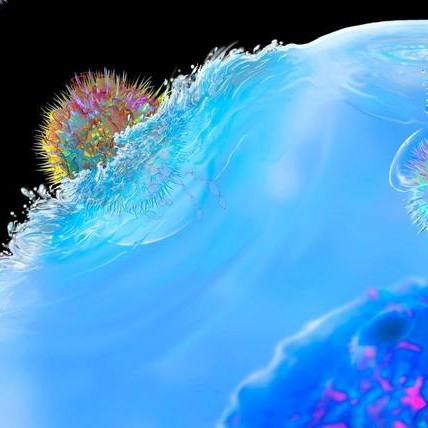-
Biotherapeutics
Science Saturday: Regenerating muscles after cancer surgery
Advancements in microsurgery are making it possible to harness the body’s healing power to regenerate muscle strength after some cancer surgeries, particularly surgery to remove soft tissue sarcoma. Mayo Clinic orthopedic oncologists are teaming with plastic surgeons in a procedure they’ve coined “oncoregeneration.” They are seeking to perfect this procedure in which large muscle is transferred to close a surgical wound and then coaxed to function like the muscle lost to cancer. This oncoregenerative surgery combines free muscle transfers with pain management and lymphatic reconstruction with a goal of restoring function, while preventing damaged nerves and lymph nodes that can cause pain and swelling.

“Quality of life after surgery is one of the biggest reasons we started doing this surgery. Sarcoma patients were functional, but would get tired easily, mainly because they are relying on other muscle groups to restore the function that they once had. Sometimes being just OK after cancer surgery isn’t good enough,” says Matthew Houdek, M.D., an orthopedic oncologist at Mayo Clinic. “With this functional transfer, we are attempting to restore form and function of the muscle, so patients can get back to the lifestyle they once had.”
Every year there are more than 13,000 new cases of soft tissue sarcoma diagnosed in America, and 5,000 people will die from it, according to the American Cancer Society. Just a few decades ago, the only way to treat it was through limb amputation. In more recent years, cancer could be controlled by removing only the tumor, but patients often suffered severe limitations in mobility due to swelling, pain and loss of muscle.
The procedure at Mayo Clinic is a free flap surgery done under a microscope with high precision tools smaller than the tip of a pen. These micro tools protect blood vessels, small nerves and small lymphatic vessels that can be less than 1 millimeter in diameter, so they can be transferred to the site of the tumor resection. Much like a plug placed in an electrical outlet, nerves and blood vessels from the healthy muscle are connected to the nerves and blood supply where the cancer was removed. That triggers a regeneration in which the transferred muscle may function like the one that had been removed.

“Advancements in microsurgical techniques have made what we can repair and what we can restore much better.We now have the abilities to reconstruct and manage nerves in such a way that we minimize the chances of developing chronic phantom pain. We are also able to reconstruct the lymphatic channels to avoid painful fluid buildup and swelling that can limit mobility, also known as lymphedema. That’s a major improvement for patients,” says Steven Moran, M.D., of the Mayo Clinic Division of Plastic and Reconstructive Surgery.
Regenerative Medicine Minnesota, a statewide bipartisan initiative to advance regenerative medicine research, education and practice, awarded Dr. Moran and his team a grant to study the regenerative capacity of muscle. That research will explore opportunities for new regenerative therapeutics to restore muscle volume and muscle function after surgery or traumatic injury.
Like extra innings in a baseball game
For Mark Merila, oncoregenerative surgery was like the bonus of playing extra innings. The 48-year-old former professional baseball player and coach for the San Diego Padres defeated a rare brain tumor in the early 2000s through chemotherapy and radiation. He transitioned to a job as a baseball scout for the Padres, and despite having right side paralysis from the brain tumor, he enjoyed an active lifestyle. Then in 2018, a lump developed in his good leg that turned out to be an aggressive soft tissue sarcoma. Dr. Houdek had to remove two-thirds of Merila’s left quadriceps to get rid of all the cancer.
Facing the prognosis of life in a wheelchair or walking with a brace, Merila opted for the free flap surgery. Together Dr. Houdek and Dr. Moran transferred a portion of Merila’s latissimus dorsi (back and shoulder muscle) to Merila’s quadriceps, where it now functions as a normal thigh muscle.

“You’ve heard the saying that a cat has nine lives. I feel like I’ve had nine-and-a-half lives. I defeated cancer twice before the age of 50. I am very happy for the opportunity to have this surgery which has restored my ability to walk and, most importantly, to drive a car again,” says Merila. “This surgery has given me a new chance to go back to work and return to my normal activities, although at a slower pace.”
While transfers of smaller muscle groups in the upper body are more commonly performed, Mayo Clinic is one of the first to successfully perform functional free flap surgeries in larger muscles in the lower body.
“It takes expertise in lymphatic reconstruction, nerve reconstruction and muscle reconstruction. To find that in one medical institution is unique. The incredible teamwork at Mayo Clinic is what makes this possible,” says Dr. Moran.
“This is a huge step forward for our patients. We have some people who have gotten back to running, biking, jumping and nearly everything they want to do,” says Dr. Houdek.
The team at Mayo Clinic aspires to apply the oncoregenerative surgery to more types of large muscle transfers. As for Mark Merila, he hopes that with additional physical therapy, he will one day be able to get back to all his normal activities, including playing golf.
Mayo Clinic Center for Regenerative Medicine supports the work of physicians and scientist to advance the body’s ability to restore form and function toward a pre-disease state.
###







